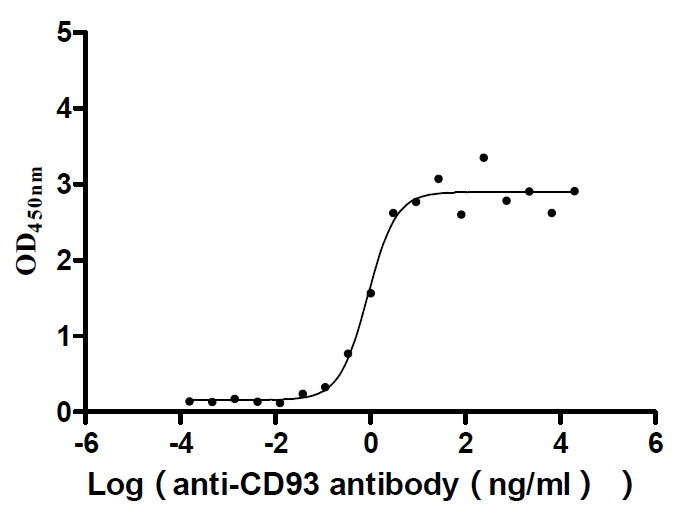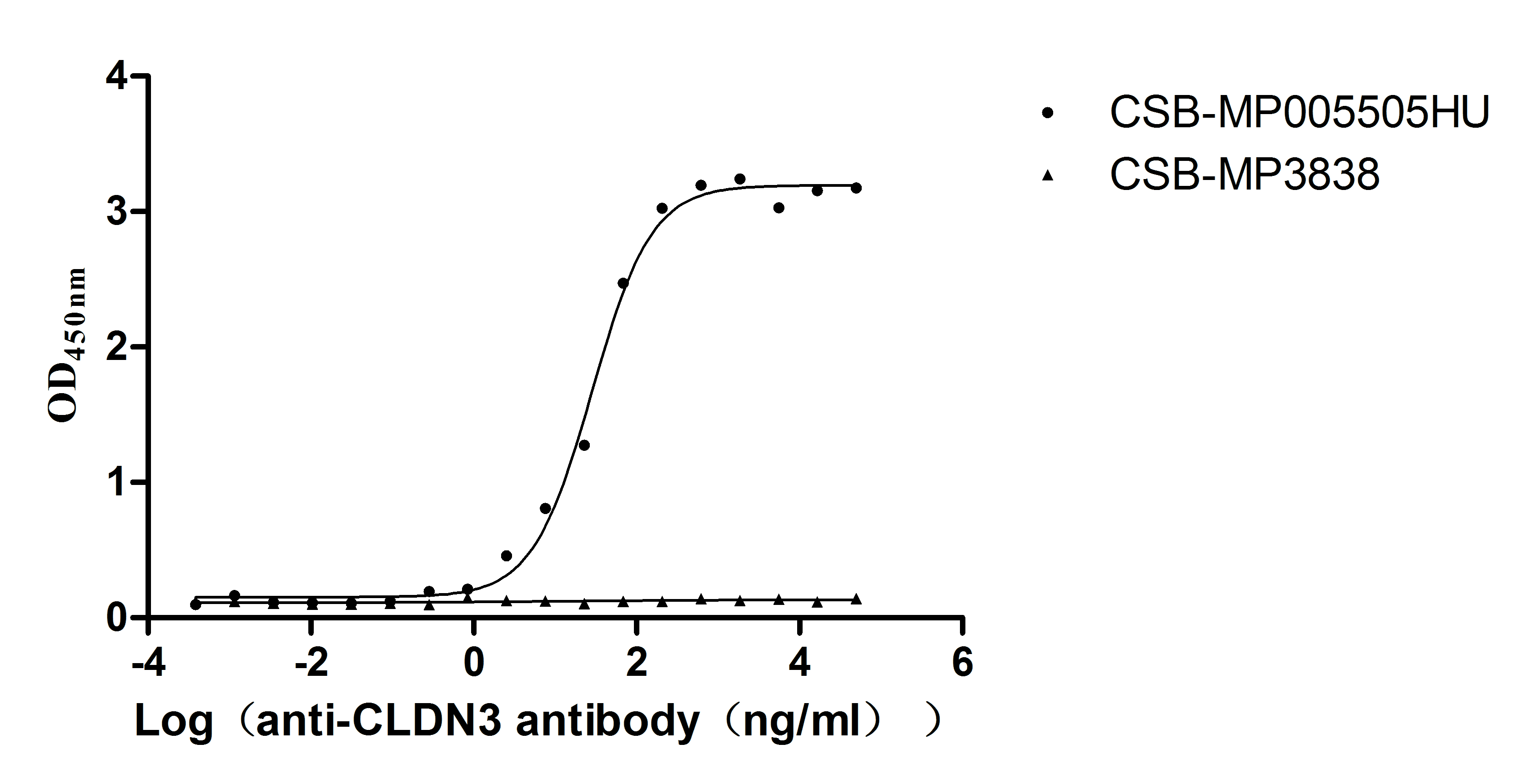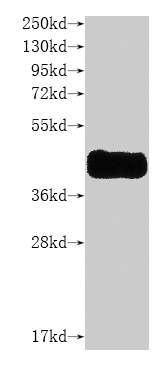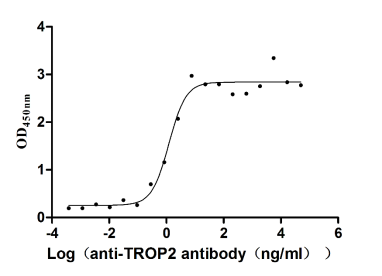Recombinant Mouse Probable E3 ubiquitin-protein ligase MYCBP2 (Mycbp2), partial
-
中文名称:小鼠Mycbp2重组蛋白
-
货号:CSB-YP749258MO
-
规格:
-
来源:Yeast
-
其他:
-
中文名称:小鼠Mycbp2重组蛋白
-
货号:CSB-EP749258MO
-
规格:
-
来源:E.coli
-
其他:
-
中文名称:小鼠Mycbp2重组蛋白
-
货号:CSB-EP749258MO-B
-
规格:
-
来源:E.coli
-
共轭:Avi-tag Biotinylated
E. coli biotin ligase (BirA) is highly specific in covalently attaching biotin to the 15 amino acid AviTag peptide. This recombinant protein was biotinylated in vivo by AviTag-BirA technology, which method is BriA catalyzes amide linkage between the biotin and the specific lysine of the AviTag.
-
其他:
-
中文名称:小鼠Mycbp2重组蛋白
-
货号:CSB-BP749258MO
-
规格:
-
来源:Baculovirus
-
其他:
-
中文名称:小鼠Mycbp2重组蛋白
-
货号:CSB-MP749258MO
-
规格:
-
来源:Mammalian cell
-
其他:
产品详情
-
纯度:>85% (SDS-PAGE)
-
基因名:
-
Uniprot No.:
-
别名:Mycbp2; Pam; Phr1; E3 ubiquitin-protein ligase MYCBP2; EC 2.3.2.-; Myc-binding protein 2; Pam/highwire/rpm-1 protein; Protein Magellan; Protein associated with Myc
-
种属:Mus musculus (Mouse)
-
蛋白长度:Partial
-
蛋白标签:Tag type will be determined during the manufacturing process.
The tag type will be determined during production process. If you have specified tag type, please tell us and we will develop the specified tag preferentially. -
产品提供形式:Lyophilized powder
Note: We will preferentially ship the format that we have in stock, however, if you have any special requirement for the format, please remark your requirement when placing the order, we will prepare according to your demand. -
复溶:We recommend that this vial be briefly centrifuged prior to opening to bring the contents to the bottom. Please reconstitute protein in deionized sterile water to a concentration of 0.1-1.0 mg/mL.We recommend to add 5-50% of glycerol (final concentration) and aliquot for long-term storage at -20℃/-80℃. Our default final concentration of glycerol is 50%. Customers could use it as reference.
-
储存条件:Store at -20°C/-80°C upon receipt, aliquoting is necessary for mutiple use. Avoid repeated freeze-thaw cycles.
-
保质期:The shelf life is related to many factors, storage state, buffer ingredients, storage temperature and the stability of the protein itself.
Generally, the shelf life of liquid form is 6 months at -20°C/-80°C. The shelf life of lyophilized form is 12 months at -20°C/-80°C. -
货期:Delivery time may differ from different purchasing way or location, please kindly consult your local distributors for specific delivery time.Note: All of our proteins are default shipped with normal blue ice packs, if you request to ship with dry ice, please communicate with us in advance and extra fees will be charged.
-
注意事项:Repeated freezing and thawing is not recommended. Store working aliquots at 4°C for up to one week.
-
Datasheet :Please contact us to get it.
靶点详情
-
功能:Atypical E3 ubiquitin-protein ligase which specifically mediates ubiquitination of threonine and serine residues on target proteins, instead of ubiquitinating lysine residues. Shows esterification activity towards both threonine and serine, with a preference for threonine, and acts via two essential catalytic cysteine residues that relay ubiquitin to its substrate via thioester intermediates. Interacts with the E2 enzymes UBE2D1, UBE2D3, UBE2E1 and UBE2L3. Plays a key role in neural development, probably by mediating ubiquitination of threonine residues on target proteins. Involved in different processes such as regulation of neurite outgrowth, synaptic growth, synaptogenesis and axon degeneration. Required for the formation of major central nervous system axon tracts. Required for proper axon growth by regulating axon navigation and axon branching: acts by regulating the subcellular location and stability of MAP3K12/DLK. Required for proper localization of retinogeniculate projections but not for eye-specific segregation. Regulates axon guidance in the olfactory system. Involved in Wallerian axon degeneration, an evolutionarily conserved process that drives the loss of damaged axons: acts by promoting destabilization of NMNAT2, probably via ubiquitination of NMNAT2. Catalyzes ubiquitination of threonine and/or serine residues on NMNAT2, consequences of threonine and/or serine ubiquitination are however unknown. Regulates the internalization of TRPV1 in peripheral sensory neurons. May mediate ubiquitination and subsequent proteasomal degradation of TSC2/tuberin. Independently of the E3 ubiquitin-protein ligase activity, also acts as a guanosine exchange factor (GEF) for RAN in neurons of dorsal root ganglia. May function as a facilitator or regulator of transcriptional activation by MYC. Acts in concert with HUWE1 to regulate the circadian clock gene expression by promoting the lithium-induced ubiquination and degradation of NR1D1.
-
基因功能参考文献:
- this study shows that Myc binding protein 2 suppresses M2-like phenotypes in macrophages during zymosan-induced inflammation in mice PMID: 29067676
- nuclear localization of Ran was strongly increased in MYCBP2-deficient DRGs PMID: 26304119
- Arf-bp1 and Pam are novel regulators of circadian gene expression that target Rev-erb alpha for degradation PMID: 20534529
- Mycbp2 and Robo2 were found to cooperate within a genetic network that has profound effects on axon guidance PMID: 23525682
- Phr1 is identified as a key regulator of a core axon degeneration program that balances axon survival and loss in various neuronal cell types. PMID: 23665224
- The ubiquitin ligase complex containing Pam-Fbxo45 likely targets additional synaptic and axonal proteins, which may explain the overlapping neurodevelopmental defects observed in Phr1 and Fbxo45 deficiency. PMID: 22798074
- These results show that Phr1 is an essential regulator of retinal ganglion cell projection during both dLGN and SC topographic map development. PMID: 21324225
- p38 MAPK activation can inhibit activity-induced ion channel internalization and MYCBP2 regulates internalization of TRPV1 in peripheral sensory neurons as well as duration of thermal hyperalgesia through p38 MAPK PMID: 21098484
- Structures of both the first and second PHR domains of Mus musculus (mouse) Phr1 (MYC binding protein 2, Mycbp2) have been determined, revealing a novel beta sandwich fold composed of 11 antiparallel beta-strands. PMID: 20156452
- Phr1 is required for formation of major CNS axon tracts via a mechanism that is both cell-nonautonomous and independent of DLK. PMID: 17901218
- Thus, efficacious pathfinding requires Phr1 activity for coordinating the cytoskeletal organization that distinguishes axons from growth cones. PMID: 18031680
- Protein Associated with Myc (PAM) was identified as a binding partner of KCC2. PMID: 18769030
- Results show that a loss-of-function allele of Phr1 resulting in respiratory distress at birth. PMID: 19391113
显示更多
收起更多
-
亚细胞定位:Nucleus. Cell projection, axon. Cytoplasm, cytoskeleton.
-
蛋白家族:Highwire family
-
组织特异性:Expression is mostly restricted to the nervous system, including expression in motor and sensory axons. During postnatal development, expression is particularly strong in the cerebellum, hippocampus and retina. Lower levels of expression are observed thro
-
数据库链接:
Most popular with customers
-
Recombinant Human T-cell surface protein tactile (CD96), partial (Active)
Express system: Mammalian cell
Species: Homo sapiens (Human)
-
Recombinant Rabbit Tissue factor pathway inhibitor (TFPI) (Active)
Express system: Mammalian cell
Species: Oryctolagus cuniculus (Rabbit)
-
Recombinant Macaca fascicularis CD44 antigen (CD44), partial (Active)
Express system: Mammalian cell
Species: Macaca fascicularis (Crab-eating macaque) (Cynomolgus monkey)
-
Recombinant Human Microtubule-associated protein tau (MAPT) (Active)
Express system: Mammalian cell
Species: Homo sapiens (Human)
-
Recombinant Human Complement component C1q receptor (CD93), partial (Active)
Express system: Mammalian cell
Species: Homo sapiens (Human)
-
Recombinant Human Claudin-3 (CLDN3)-VLPs (Active)
Express system: Mammalian cell
Species: Homo sapiens (Human)
-
Recombinant Human C-C chemokine receptor type 8 (CCR8)-VLPs (Active)
Express system: Mammalian cell
Species: Homo sapiens (Human)
-
Recombinant Human Tumor-associated calcium signal transducer 2 (TACSTD2), partial (Active)
Express system: Mammalian cell
Species: Homo sapiens (Human)


-AC1.jpg)
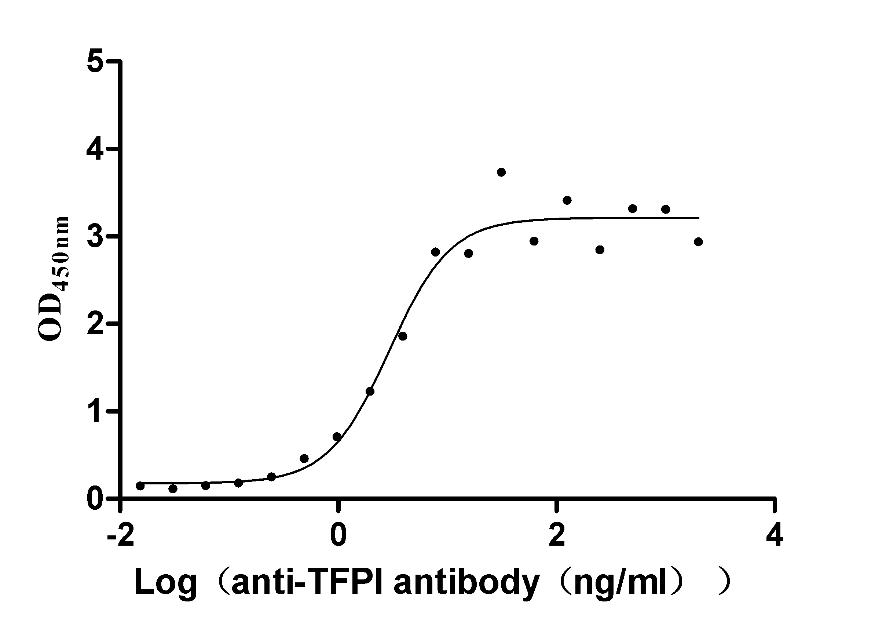
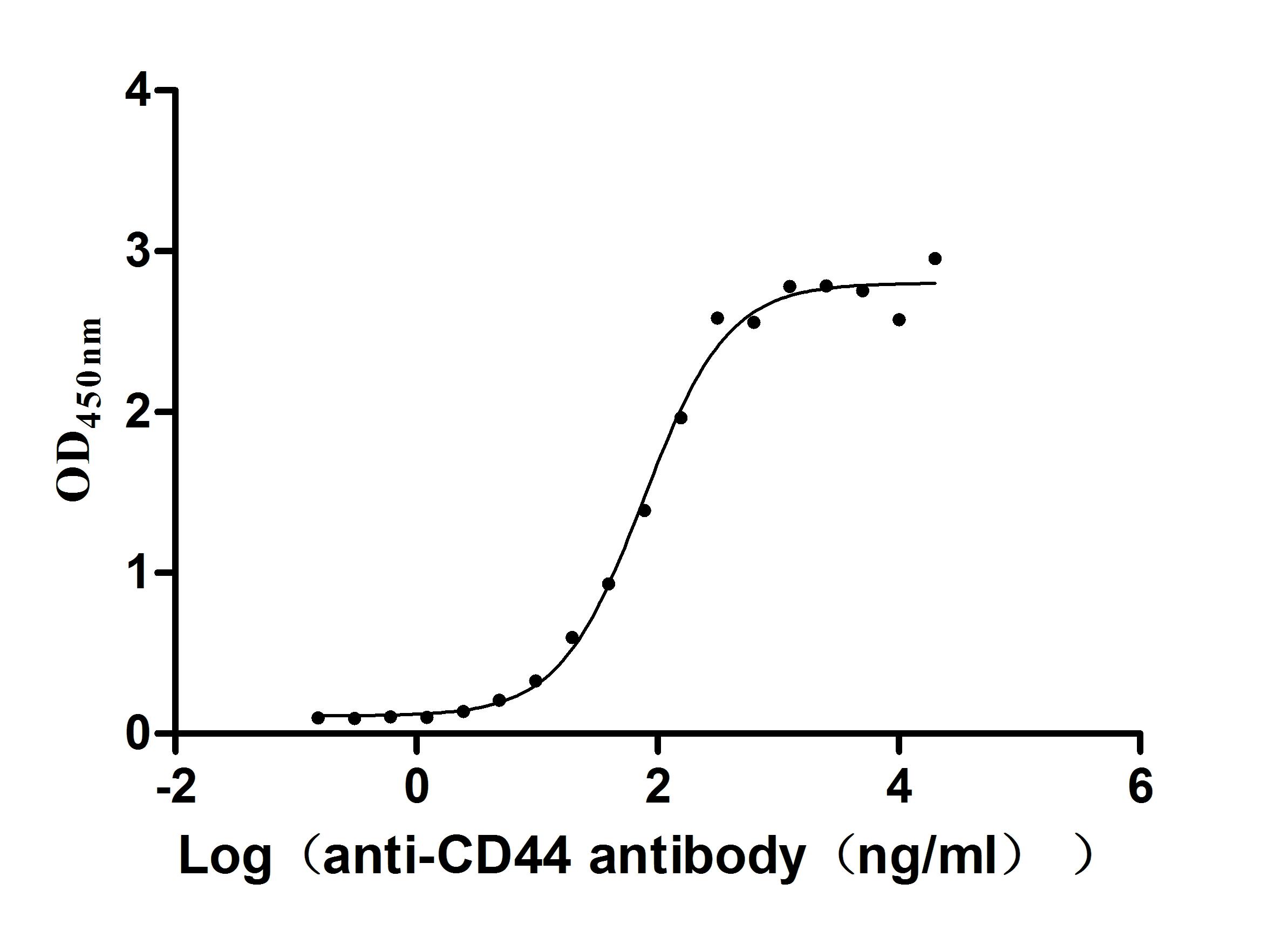
-AC1.jpg)
